 Noxious Weeds in the Verde Valley - February 24, 2010 Jeff Schalau, Associate Agent, Agriculture & Natural Resources University of Arizona Cooperative Extension, Yavapai County The dictionary definition of a weed is "any undesired, uncultivated plant." Weed scientists define a weed as "a plant that is competitive, persistent, and pernicious. It interferes with human activities and, as a result, is undesirable." This definition, while somewhat academic, has some merit. My working definition is more to the point: weeds are non-native plants that interfere with my management objectives. Some weeds have earned the descriptor “invasive” which means a non-native plant which is likely to cause economic or environmental harm or harm to human health. “Noxious” weeds are invasive plants that have caused enough documented concern to become legally regulated or unlawful. The Verde Valley has populations of several plants on Arizona’s Noxious Weed List. Two noxious weeds germinating and/or growing right now are yellow starthistle (Centaurea solstitialis) and diffuse knapweed (Centaurea diffusa). The largest population of yellow starthistle is primarily on the south end of Camp Verde between Quarterhorse Lane and Rio Verde Lane. Diffuse knapweed is concentrated in the Village of Oak Creek area and a few other areas in and around Sedona. Yellow starthistle is native to southern Europe. It arrived in North America in alfalfa seeds shipped to California during the mid 1800's. Today, it can be found in 41 of the contiguous 48 states. It has colonized over 15 million acres in California and is increasing rapidly in Idaho, Oregon, and Washington. In the west, yellow starthistle poses a serious threat to semiarid rangelands but also can infest orchards, roadsides, ditch banks, and parklands. Aside from being invasive, yellow starthistle is poisonous to horses and can cause chewing disease: a fatal neurological disorder. Yellow starthistle is a cool season annual with bright yellow flowers. It germinates in the fall or spring and forms a rosette that lies close to the ground. After becoming established and forming a taproot, it rapidly grows upward and begins to flower in late spring. The flowers are armed with stout, straw-colored spines 1 to 2 inches long. In the spring, the plant consists of a rosette that lies close to the ground. In early summer, the stems elongate to produce a plant that ranges from 4 inches to 5 feet tall. Later in the growing season, flowers fade from yellow to a dull straw color. The flowers produce abundant seed. These seeds are spread to new areas by wind, in the fur and feathers of animals and birds, by animals and birds eating seeds and passing them through their gut, and by human activity. Diffuse knapweed is also native to southern Europe and likely arrived in North America as a seed contaminant. Today, it is found in 24 of the contiguous 48 states. It is found in similar areas to yellow starthistle, does not cause chewing disease, but can cause severe skin irritation when handled. Always wear gloves when handling diffuse knapweed. Diffuse knapweed is a short-lived perennial, biennial, or sometimes annual plant with white to lavender flowers. It forms a tap-rooted rosette and flowers between May and September. Flowers are solitary or in clusters of two or three at the ends of the branches of the plant. Flower bracts are edged with a fringe of spines and ends with a longer spreading spine at the tip, resembling a crab like appearance. In fall, diffuse knapweed often dries and breaks at the soil surface allowing it to tumble in the wind spreading seeds as it goes. Noxious weeds can cause serious impacts and even decrease property values. The best control for small populations of yellow starthistle and diffuse knapweed is hand removal of rosettes before they go to seed. Plants that have flowered should be double-bagged in heavy plastic bags and sent to a sanitary landfill. You may consider using herbicides or hiring a licensed weed control contractor. When dealing with larger populations, you should band together with neighboring landowners and local weed management groups to develop an effective long-term management program. Below are photos and links to additional resources on yellow starthistle and diffuse knapweed. The University of Arizona Cooperative Extension has publications and information on gardening and pest control. If you have other gardening questions, call the Master Gardener line in the Cottonwood office at 646-9113 ext. 14 or E-mail us at cottonwoodmg@yahoo.com and be sure to include your address and phone number. Find past Backyard Gardener columns or submit column ideas at the Backyard Gardener web site: http://cals.arizona.edu/yavapai/anr/hort/byg/. Links Arizona Department of Agriculture Noxious Weed List www.azda.gov/PSD/quarantine5.htm University of California Yellow Starthistle Information wric.ucdavis.edu/yst/yst.html Colorado State University Diffuse Knapweed Information www.ext.colostate.edu/Pubs/natres/03110.html Photos 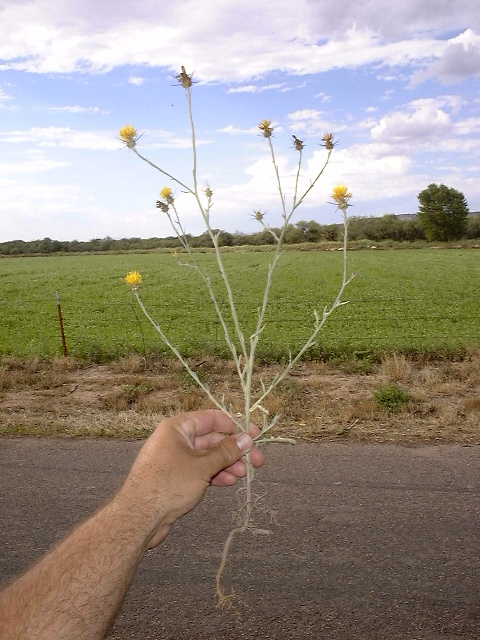 Yellow Starthistle - Entire Plant 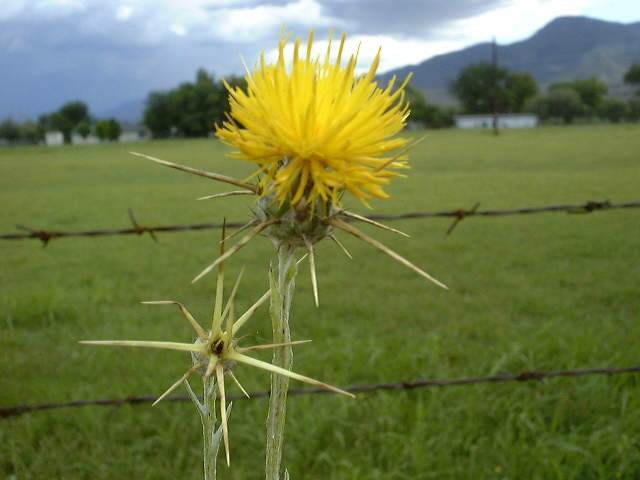 Yellow Starthistle Flower 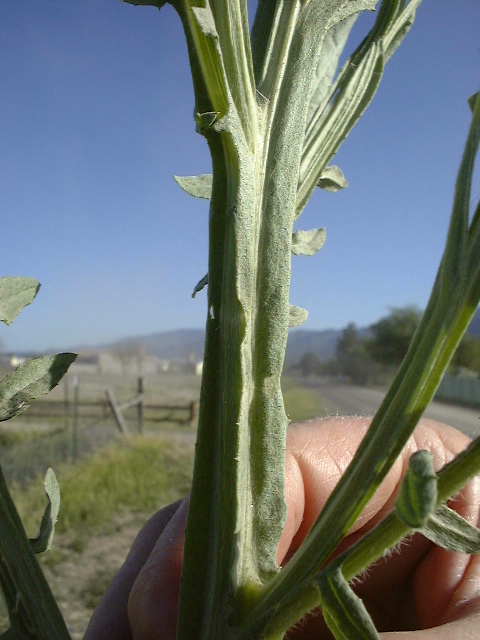 Yellow Starthisle Stem 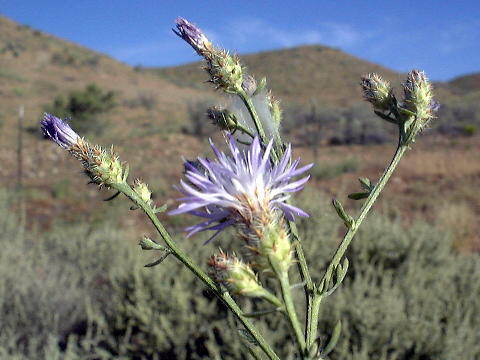 Diffuse Knapweed Flower 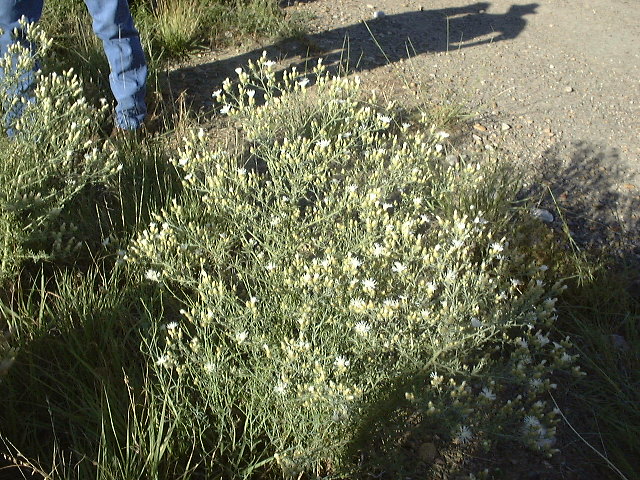 Diffuse Knapweed Plant 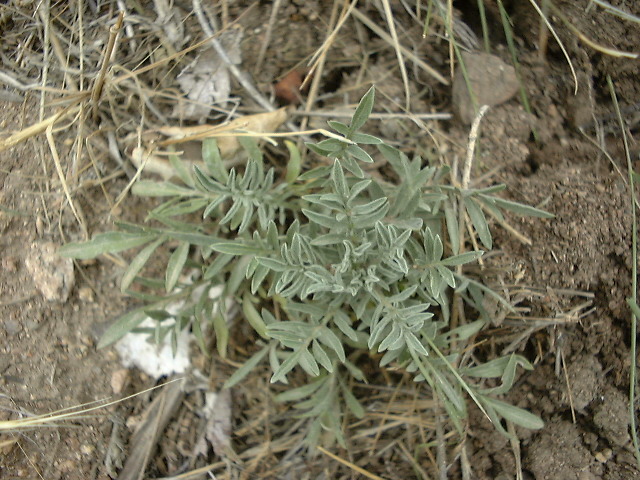 Spotted Knapweed Rosette - looks almost identical to diffuse knapweed rosette |